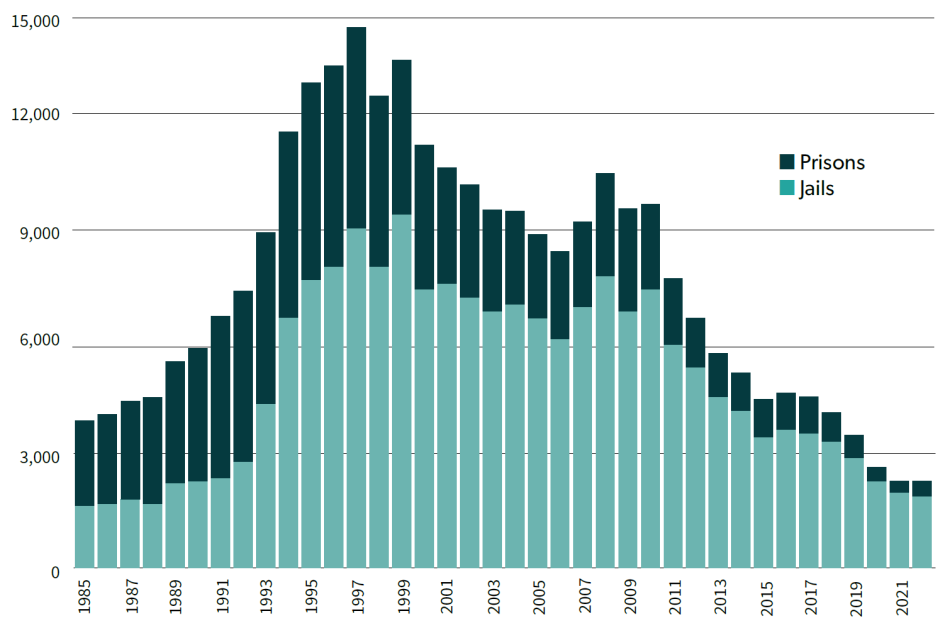One-Day Count of Youth in Adult Prisons and Jails
In 2022, 1,900 people under 18-years-old were held in an adult jail and 437 were serving sentences in an adult prison, representing an 84% decline from the peak year, 1997, when 14,500 youth were held in these facilities. In 2022, 23 states had no people under 18 in their adult prisons.
Between 2021 and 2022, there was a notable rise in the number of youth in adult prisons, reflecting a 50% increase in only one year. Though this population is small in number, this one-year rise represents a reversal of a 25-year trend.
Figure 7. Youth in Adult Jails and Prisons (One-Day Count) 1985-2022

Sources: Austin, J., Johnson, K., & Gregoriou, M. (2000). Juveniles in Adult Prisons and Jails: A National Assessment. U.S. Department of Justice, Office of Justice Programs, Bureau of Justice Assistance; Carson, E.A. and Kluckow, R. (2023). Prisoners in 2022 – Statistical Tables. U.S. Department of Justice, Bureau of Justice Statistics, plus prior editions; Zeng, Z. Carson, E.A., and Kluckow, R. (2023). Just the Stats; Juveniles Incarcerated in U.S. Adult Jails and Prisons, 2002–2021; Zeng, Z. (2023). Jail Inmates in 2022 – Statistical Tables. U.S. Department of Justice, Bureau of Justice Statistics, plus prior editions.
Decades of Progress, But Troubling Disparities Remain
The sharp declines in youth arrests and incarceration coincided, and we know that incarcerating fewer adolescents did not lead to increases in youth offending. However, the persistent racial and ethnic disparities in the youth justice system highlight the need to address the sources of those disparities wherever they emerge. Youth incarceration damages adolescents’ well being on multiple dimensions, but effective alternatives exist that show lower recidivism and higher life achievement.
The long-term portrait of youth justice is a promising one: far fewer youth are being arrested and referred to juvenile and adult courts than decades ago. These changes have allowed for the closure of more facilities, but additional progress is not only possible, but necessary. Youth given informal responses to their offending have better results, and the success of these diversionary programs provides a model for even more states to reduce the footprint of their justice systems.
This post was originally published on this site be sure to check out more of their content.






